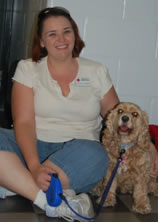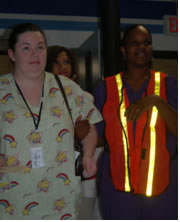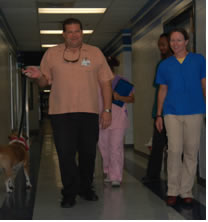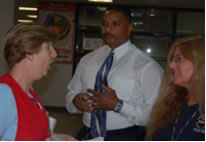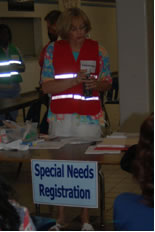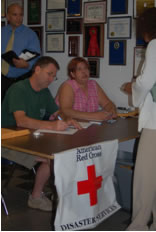|
If you are planning for a year, sow rice; if you are planning for a decade, plant trees; if you are planning for a lifetime, educate the people.??Chinese proverb |
|
[top]
 |
John Haven, Director of the UF College of Veterinary Medicine addresses a recent I-300 session.
Photo ?Gary Painter
|
|
|
Because the I-300 (Intermediate ICS Command) course scheduled for the UF Veterinary School, Gainesville has reached maximum enrollment (18 student participants), FDACS-DAI’s Gary Painter has announced that another I-300 course will be offered from September 18th – 20th. According to Painter, this will be the final class of the year that is open to general members of the SART community. There is no charge to attend.
At this time, the following I-300 courses are open: |
|
July 24-26 ?IFAS, Kissimmee
September 18-20 ?UF Veterinary College, Gainesville
Registration is closed for I-300 courses in Gainesville August 7-9 and October 8-10.
Completion of I-100 (Introduction to ICS), I-200 (ICS for Single Resources and Initial Action Incidents), and I-700 (Introduction to NIMS) ?all available for self-study on line at http://training.fema.gov/IS/crslist.asp ?are requirements for I-300. Certificates of Completion for each course must be presented the day of registration.
|

|
|
The registration form is posted on line at www.flsart.org/pdf/download/I-300_Registration_Form-rev-6-16-08-glp_2_.pdf. For additional information, contact Gary Painter at (863) 519-8470, cell (863) 698-6377 painterg@doacs.state.fl.us. Your completed registration should also go to Painter and can be emailed, faxed to (863) 519-8469 or sent by regular mail to his office: 605 E. Main Street - Suite 207, Bartow, FL 33830. [Note: I-300 training requires a 25-day advance registration for material availability.]
|
[top]
New Training Module
“Organizing Pet-Friendly Evacuation Shelters”
Sub-titled “Best Practices for Florida – Training Guide” a new module posted to the Florida SART web site is designed to “assist in organizing a pet-friendly evacuation shelter guided by best practices developed through experience with real disasters.” The module consists of a Lesson Plan and PowerPoint presentation and can be downloaded from the SART training module index at www.flsart.org/library/index.htm.
|
|
|
A pet-friendly evacuation shelter is a public emergency shelter that accommodates humans and pets in nearby facilities or in different areas of the same facility.
This module includes discussion about and pointers for the practical application of shelter management principles to shelter planning, management, and organization; animal health, housing and care; after-hazard checkout and clean-up; public outreach, media relations, and finding funding. It is part of a national response to enactment of the Pets Evacuation and Transportation Standards Act which requires state and local emergency management officials to address the needs of individuals with pets and service animals after a major disaster or emergency.
Development of “Organizing Pet-Friendly Evacuation Shelters” was directed by Dr. Carol J. Lehtola, Associate Professor, and Charles M. Brown, Coordinator of Information & Publication Services, Dept. of Agricultural & Biological Engineering, University of Florida – IFAS and the staff of Steppingstone LLC. (NOTE: For additional questions, contact Carol Lehtola at IFAS [352-392-1864 x 223 clehtola@ufl.edu]. The PowerPoint presentation online does not include various segments of video. For a complete version with video contact Joe Kight at FDACS [850-410-0920 kightj@doacs.state.fl.us]). |
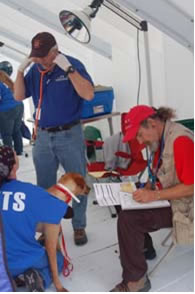 |
Sarasota veterinarian and Vet Corps volunteer Jan Hasse prepares to examine a dog during the March SART exercise in Ocala.
Photo ?Rick Sapp
|
|
|
|
|
[top]
Florida and Water – Fast Facts
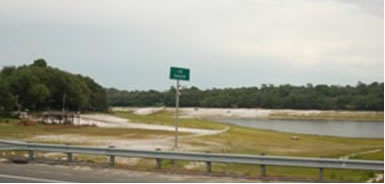 |
The docks bordering Lake Brooklyn east of Keystone Heights are now high and dry. While the cause of their decline is complex, a holistic solution begins with simple water conservation.
Photo ?Rick Sapp
|
|
|
- Leaking toilets are the biggest water wasters inside the home. Even a small leak can waste 2,000 gallons per month.
- A shower can use 25-50 gallons (five gallons per minute) and the average bath takes about 36 gallons. Keeping showers to less than five minutes conserves water and saves money.
- A faucet that drips 60 times in one minute could waste more than three gallons a day, as much as 1,225 gallons per year.
- Automatic dishwashers use about 15 gallons per load. Make sure they are full before running them.
|
|
[Source: Gainesville Regional Utilities via VPI Water Authority]
|
|
[top]
IFAS/UF Hosts International Climate Symposium
|
Florida agriculture needs information to cope with the challenges posed by a changing climate:
- hurricanes, drought, floods, freezes, heat stress, and wild fires;
- changes in the frequency and intensity of extreme events, sea level rise,
and agricultural emissions of greenhouse gases.
In addition to the risks, however, climate change may offer economic opportunities such as bio-fuel production and “carbon sequestration.”
Because climate change will almost certainly be complex, coping effectively depends on deepening research, involving all stakeholders, and effectively communicating findings.
To help prepare for these challenges, IFAS/UF with the Southeast Climate Consortium recently hosted a conference in St. Pete Beach to share information, identify priorities, and developing information and decision support systems.
A great deal of information about this conference including a brochure and agenda can be found on line at www.conference.ifas.ufl.edu/CIMR/out.htm. |
 |
|
Photo ?American Sociological Assn. Section on Environment & Technology
|
|
|
[top]
Through the Grapevine
“I was glad to hear the budget cuts aimed at IFAS were not disproportionate. The Ag industry as a whole came together in support of IFAS. We farmers don’t ask for a lot, but when we get a burr under our saddle or something that really affects us, it is amazing how we can bring it together and make something happen. Tourism is number one in the state, but agriculture is still number two. Down in Devil’s Garden, where our (citrus) groves are located, there are not going to be any houses or office buildings there for a long time. So what are we going to do with that land? Agriculture is a necessity in this state.”
Jim Snively, Florida Gardens
2008 Citrus Achievement Award Winner
(Florida Grower, June 2008 – www.floridagrower.net
Frank Giles, Editor)
|
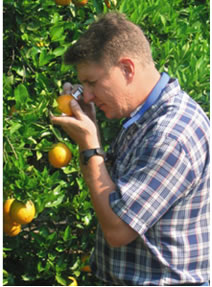 |
Jim Snively, vice president of groves at Southern Gardens Citrus, uses a 10x hand lens to inspect for rust mites, a common and harmful Florida pest.
Photo ?Southern Gardens Citrus
|
|
|
|
|
|
[top]
Remember…Agricultural Emergency Response Training
 |
A crop duster suddenly appears over the soybean fields in your county. Is the airplane easy to identify? Do you know what the pilot is spraying? How to report? Whom to contact for help and information?
Photo ?USDA, Agricultural Research Service
|
|
|
Class 08-10 27 July- 1 August
Class 08-11 24 Aug - 29 August
Class 08-12 14-19 September
Train at the nation's premier all-hazards training center, FEMA’s Center for Domestic Preparedness (http://cdp.dhs.gov), Anniston, AL. It is the only federally chartered Department of Homeland Security (DHS) Weapons of Mass Destruction (WMD) training center.
For information, contact APHIS Liaison to CDP R. Gordon Harman at (256) 847-2350 office or (301) 332-8390 BlackBerry; harmanr@cdpemail.dhs.gov or Robert.G.Harman@aphis.usda.gov. |
|
[top]
Duval County/Jacksonville Training Includes
Pet-Friendly Shelter Operations
On Thursday, June 12 Duval County (Jacksonville) held an emergency sheltering training exercise at Mandarin Middle School, one of the county’s designated multi-purpose emergency shelters. Sections of the school were designated for general population, special needs, and animals.
|
|
|
“We do not want people to refuse to evacuate because they are required to leave their pets behind,” said Kim Niessen, DVM, a veterinarian for Duval County Animal Control. “We saw that happen in the aftermath of Hurricane Katrina in 2005 and it was very unfortunate. There is no way I would evacuate without my pets. They are coming with me…or I’m staying with them.”
Niessen emphasized that a shelter was not a “drop-off,” not a pet-sitting option while the pet’s owner evacuated for the mountains. “If you come here with a pet, you must stay with your pet, and in a real emergency there would be no charge.”
|
|
|
Shelters do not take every kind of pet, Niessen said. Most are capable of handling dogs, cats, and birds…not exotic snakes or monkeys. “We don’t have a good feel for how many people will show up with their pets,” she said. “With more than a million people in Jacksonville, there could be three-quarters of a million pets. We want shelters to be thought of as a last resort, encouraging people to evacuate first…with their pets, paperwork, and a plan. Our real nightmare would be something like a category two hurricane that strengthens at the last minute and catches people off guard. Then we could be faced with a real challenge.”
Dawn Wood, Duval County emergency preparedness planer for public education, training, and exercises noted that the training exercise included personnel from the Health Department (special needs), the Red Cross (general population), and Animal Control (pets). “These are not volunteers today,” she noted, “except for some of the Red Cross people and volunteers who have brought in pets. These are Department of Health personnel so, in a sense, this is a drill. Everyone is learning how to set up cots, fill out forms, and so on. For crowd control, we will have police at the shelter and a shelter manager for each area, plus the school principal’s representative. I think what we’re finding today is that communications in a chaotic, emergency situation will be the most difficult part of operating the shelter.
|
|
|
“This is our first crack at implementing a general shelter and including pets. So all in all, I think it has been a successful exercise. We cross-trained special needs and general population staff and our folks have worked to speed up the paperwork and flow of sheltered individuals.”
|
[top]
HSUS Sponsors June DART Training in Gainesville
HSUS and Florida Wildlife Care (www.floridawildlifecare.org) are sponsoring Disaster Animal Response Team (DART) training titled “Animals in Disasters” at Santa Fe
| Community College in Gainesville from Friday June 27 to Sunday the 29th. Tuition is $115 and registration closes June 13th. For additional information, contact Leslie Straub [lesliestraub@floridawildlifecare.org], |
|
call (301) 548-7731 or go to www.humanesocietyu.org (where one may also register). |
[top]
"A Report to the Community"
During the week of June 16, the Department of Homeland Security (DHS) certified course "AWR-151 Awareness: Understanding the Dangers of Agroterrorism" was offered for the first time in Florida. The purpose of the course was to help emergency responders become informed about the dangers of agroterrorism and food system disasters, and to develop response and recovery capabilities for these incidents and communities.
|
More than 200 participants attended at three locations: Seffner, Belle Glade, and Homestead. Participants came from diverse backgrounds including Law Enforcement, Fire, Emergency Management, Public Health, Universities, IFAS Extension, Local/State/Federal Government, and Agricultural |
Growers/Producers/Distributors.
Because of the interest in this course, and in 5 additional DHS-Certified Agroterrorism Courses offered by the Western Institute of Food Safety and Security, you can look forward to additional course offerings in Florida in the near future. Please contact me if you have questions regarding future Agroterrorism Preparedness course offerings in Florida.
Art Johnstone, Director
Office of Agricultural Emergency Preparedness, FDACS
Office: (850) 410-6758 johnsta@doacs.state.fl.us |
[top]
Pest Alert: Predatory Gall Midge
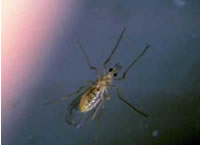 |
Adult of the predatory gall midge.
Photo ?David Gillespie, Agassiz
|
|
|
SART members hear a great deal about destructive plants and invasive animals posed to do harm to Florida’s agricultural infrastructure. Perhaps the drumbeat of looming difficulties keeps us poised for action…or perhaps, after a while, it slows our reflexes by inundating us with gloomy topics. Well, according to IFAS researchers, unless you are a spider mite, help is on the way! (http://creatures.ifas.ufl.edu/beneficial/
f_acarisuga.htm) |
|
The predatory gall midge (Feltiella acarisuga) is one of the most effective and widespread natural enemies of spider mites and a particularly important natural enemy of the two-spotted spider mite. It can be especially useful in integrated pest management for some greenhouse and field crops – tomatoes, eggplant, cucumbers, strawberries and others – when released in combination with a predaceous mite, Phytoseulus persimilis, which is a well-established natural enemy of spider mites. |
[top]
Through the Grapevine
UF/IFAS held its first Bee College & Honey Show in March at the Mid-Florida Research & Education Center, Apopka. Jamie Ellis, bee specialist and Assistant Professor, chaired the event. Here is a follow-up:
“Bee College was a tremendous success with almost 200 participants. Most likely, this ranks as one of the highest attended events of its kind in the U.S. For the Master Beekeeper Program, we graduated 57 apprentice beekeepers who will now begin work on the Advanced Beekeeper track.”
Nancy Gentry
Public Relations Coordinator
Florida State Beekeepers Association
(386) 684-3433 |
|
[top]
Florida’s Tomatoes
Salmonella saintpaul Outbreak May Cost Florida Millions
|
Botanically speaking, tomatoes are fruits. Nevertheless, due to a ruling by the U.S. Supreme Court in 1883 they are legally considered vegetables.
 |
In this June 9, 2008 file photo, Mark Roh, US FDA acting regional director holds a bag of tomatoes being tested for salmonella bacteria at FDA's southwest regional research lab, in Irvine, California.
Photo ?Courtesy FDA
|
|
|
Tomatoes are the nation's fourth most-popular fresh vegetable behind potatoes, lettuce, and onions, according to the U.S. Agriculture Department's Economic Research Service. During the winter and spring, most are grown in Florida and Mexico.
According to the Florida Department of Agriculture and Consumer Services (FDACS), Florida accounted for 49 percent of the total U.S. value of sales for fresh market tomatoes – $805 million – in 2005. Although vast fields of tomatoes may be found almost anywhere in Florida and, these days most Florida yards and gardens contain at least a few, the major county producers are south of Tampa and Orlando. |
|
| Thus, it is no small thing when tomatoes are tarnished across the nation as the carriers of a potentially deadly strain of Salmonella saintpaul. On June 11th Lisa Lochridge, spokesperson for the Florida Fruit & Vegetable Association [(321) 214-5200 lisa.lochridge@ffva.com], reported comments by Reggie Brown, executive vice president of the Florida Tomato Growers Exchange: “It's unfortunate that anyone has become ill,” Brown said. “However, we've had confidence in our tomatoes all along - we just had to wait for FDA and the CDC to do their trace-back work.”
According to Lochridge, “The Florida tomato industry remains committed to the production of a safe product. Florida is the first state in the country to adopt a comprehensive food safety program with mandatory government inspection and audit of its tomatoes.
“‘Those involved in the growing and marketing of fresh tomatoes voluntarily incorporate food safety as part of their everyday business practices,’ Brown said. ‘We're committed to taking the steps necessary to ensure consumer confidence in our crops.’” |
[top]
Weld County Colorado CART
Mobilizes for Tornado Response
|
The response following the Windsor, Colorado tornado on May 22nd was a tremendous example of how community preparedness developing an emergency plan and training to implement that plan pays big dividends, notes Kevin Dennison, Director-CVMF Animal Emergency Management Programs (kevindennison@colovma.org).
“The Weld County CART mobilized quickly, coordinated with Incident Command to get assessments and mission assignments underway, |
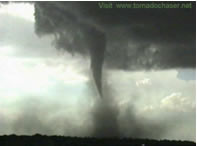 |
The Weld County tornado.
Photo ?TornadoChaser.net
|
|
|
 |
Kassi Anderson reunites with her boxer, JD, at the Windsor Community Recreation Center. The Weld County Animal Response Team set up an animal housing station to reunite pets with owners after a tornado pummeled Windsor the day before.
Photo ?DayLife.com
|
|
|
and efficiently handled the animal response mission with little or no outside assistance,” Dennison says. “The CART veterinary coordinator served as on-site field assessment officer and liaison to ESF-11 at the State EOC. There was very good coordination with the Red Cross.”
Dennison noted that Colorado SART only monitored the on-the-ground situation and that it was gratifying to see the hard work and dedication of a local community pay big dividends when a real disaster struck. (For photos of the damage caused by the Windsor tornado, go to www.flickr.com/photos/22749172@N03/2514345909/.) |
|
[top]
About the SART Sentinel
|
Editor: Rick Sapp, PhD, Technical Writer, Florida Department of Agriculture & Consumer Services, Division of Animal Industry [rsa5@cox.net]
Associate Editor: Joe Kight, State ESF-17 Coordinator, Florida Department of Agriculture & Consumer Services, Division of Animal Industry [kightj@doacs.state.fl.us]
The SART SENTINEL is an E-mail newsletter prepared monthly by Rick Sapp and the members of the Florida State Agricultural Response Team. Past issues of the Sentinel are archived on the Florida SART Web Site, www.flsart.org.
If you have a story or photo that you would like to have considered for publication in The SART SENTINEL, please contact the Editors.
|
[top]
|

 Printer-Friendly PDF Version
Printer-Friendly PDF Version







